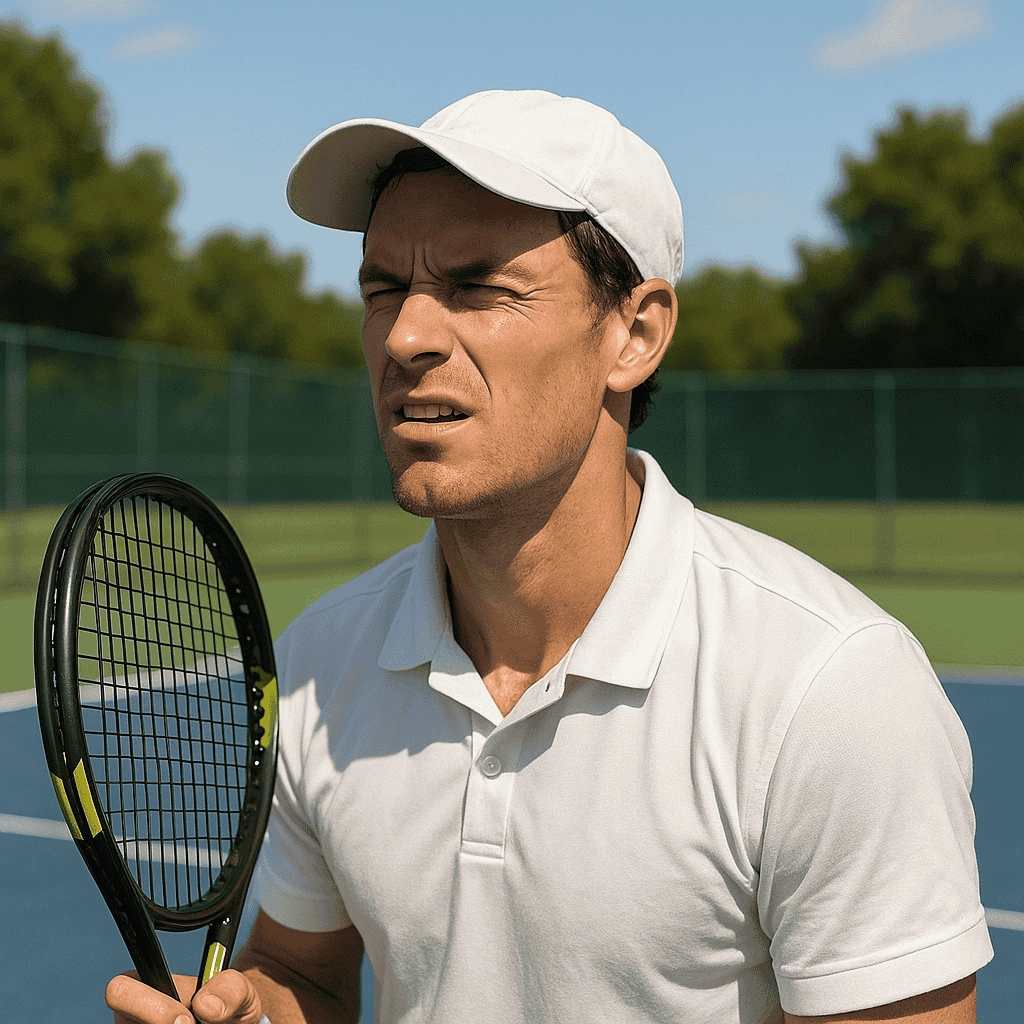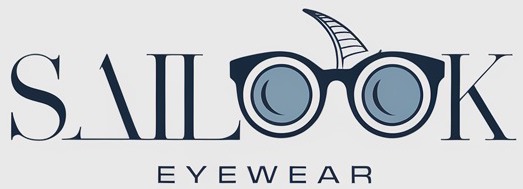Competing under blazing sun without tinted eyewear may seem counterintuitive. But here’s the real story… tinted lenses shift ball color and slow reactions by mere milliseconds. Top pros rely on naked-eye clarity, strategic head positioning, and vision drills honed by sports science rather than risk any lens-induced distortion.

1. Why don’t professional tennis players usually wear sunglasses?
Pros face rigid equipment rules from ITF and Grand Slam bodies that rarely approve tinted eyewear. Tints alter how players see a fast-moving ball against evolving backgrounds. Imagine tracking a white orb at 100 mph through shifting sun and shade—any hue shift risks a misjudged shot. Tradition enforces minimal distractions: sleek white outfits dominate, not bulky frames. Ready for the kicker? Players accept glare as part of the challenge rather than compromise critical depth cues. Clear-lens protective goggles get a pass at junior levels, yet tinted frames scare off pro scrutiny. Over decades, naked-eye vision became the gold standard so pros can split-second adjust to spin and light without tinted interference.
| Reason | Impact on Play |
|---|---|
| Tint shifts color perception | Misplayed serves and volleys |
| Frame edges block peripheral | Reduced anticipation of angled shots |
| Uniform and equipment rules | Sunglasses rarely match regulations |
| Tradition of minimal gear | Focus maintained without tinted lens |
2. What visual challenges do sunglasses present during a tennis match?
Tinted lenses distort light adaptation between bright stadium sun and shaded stands. Each head tilt forces rapid refocus costing precious milliseconds in long rallies. Curved frames warp side-angle vision so you can miss early cues of drop shots or passing tries. Polarized coatings cut horizontal glare but darken shaded arcs, masking ball spin lines. Peripheral vision narrows behind frames, hindering split-second reaction to cross-court drives. What’s the real story? Clear vision outperforms glare reduction when ball speed and spin demand pinpoint focus. Even “sport” sunglasses tuned for athletes can’t match the consistency of bare eyes under dynamic court lighting.
| Challenge | Effect |
|---|---|
| Hue distortion | Slower reaction times |
| Peripheral blockage | Missed visual cues |
| Light adaptation lag | Blur during rapid head movements |
| Over-polarization | Poor visibility in shaded patches |
3. Do sunglasses affect a tennis player’s depth perception?
Depth perception merges binocular inputs plus scene contrast instantly. Tints dim court-background separation, making it harder to estimate bounce height accurately. Lens curvature refracts light unevenly, skewing perceived ball placement by centimeters. At elite level, even a slight miscalculation causes unforced errors. This is where it gets interesting… pros refine footwork and eye drills to boost natural depth cues rather than rely on tinted lenses risking spatial warping. They train on varied court surfaces in unfiltered light, so their vision memory adapts to raw conditions without tinted filters altering real-time data.
| Factor | Impact on Depth Perception |
|---|---|
| Color contrast reduction | Blurred edge definition |
| Curved lens refraction | Skewed object placement |
| Uneven tint density | Inconsistent depth cues |
4. What role does court surface and color play in vision?
Clay, grass, and hard courts reflect light uniquely. Clay’s earthy red hue can blend under tint, hiding spin lines. Grass courts cast varied green shades that tinted filters struggle to separate from ball motion. Hard courts—often blue or green—switch contrast sharply as sun angle shifts. Here’s the real story: players adapt head tilt and footwork per surface rather than mask vision under one lens type. Practice builds surface-specific visual memory so pros track shots naturally without tinted barriers.
| Surface Type | Court Color | Tint Compatibility | Pro Adaptation |
|---|---|---|---|
| Clay | Red-orange | Poor | Footwork drills tailored to visibility |
| Grass | Green | Moderate | Head-angle adjustments |
| Hard | Blue/Green | Mixed | Surface-specific practice routines |
5. How do players manage sun and glare without sunglasses?
Top athletes deploy precise head-tilt angles on serve to keep sun out of direct sight. Sweat-wicking visors and low-profile hats offer shade without altering color perception. But here’s the kicker… targeted eye-training drills widen natural brightness tolerance and speed up focus shifts. Between points pros use towels to mop sweat and shield sudden glare bursts. This blend of gear and vision fitness outperforms tinted eyewear in preserving split-second ball tracking and reaction.
| Strategy | Benefit |
|---|---|
| Head-tilt positioning | Minimizes direct sun exposure |
| Visors and hats | Shade without tinted distortion |
| Eye-focus drills | Boosts natural glare tolerance |
| Towel-wipe routines | Quick sweat and glare management |
6. Are there tennis-specific sunglasses on the market?
Several brands craft sport-tuned frames with wraparound designs, polarized coatings, and anti-fog layers. However, pro conditions outpace generic sport models. Polarization reduces horizontal glare but darkens shaded ball arcs. Coatings can wear under sweat and UV, creating distracting patches. What’s the real story? Even specialized prototypes struggle under extreme court lighting and high-speed tracking. Many pros trial them in practice but revert to bare-eye vision for match intensity, valuing consistency above marginal glare relief.
| Brand/Model | Key Features | Pro Trial Outcome |
|---|---|---|
| SportX ProSeries | Polarized, anti-fog | Good comfort, poor consistency |
| CourtVision Elite | UV coating, lightweight | Fade in shade zones |
| AceShadow Wrap | Ventilation, wraparound | Peripheral warp reported |
7. Have any top players ever worn sunglasses on court?
A handful of doubles specialists and exhibition participants experimented with tinted lenses live. John McEnroe wore tinted frames early but abandoned them after reporting skewed court vision. Injury-recovery players sometimes don clear protective goggles but avoid tints. Ready for the good part? public reaction ranges from intrigue to ridicule, underscoring how mismatched sunglasses appear in pro aesthetics. Many pros fear tinted frames could signal a lack of confidence in their innate vision and training-honed skill.
| Player | Context | Outcome |
|---|---|---|
| John McEnroe | Early career trials | Abandoned due to skewed vision |
| Exhibition Doubles Pros | Charity matches | Limited use, then dropped |
| Injury-recovery athletes | Clear impact goggles only | No tint in competition |
8. What do sports vision experts say about sunglasses in tennis?
Optometrists value UV protection but caution tinted filters in precision sports. They recommend UV-blocking contact lenses or clear goggles for practice. This is where it gets interesting… vision experts stress that elite athletes require undistorted depth cues above all. They prescribe vision therapy drills that build glare tolerance rather than external filters. Research shows exposure training reduces photophobia and improves visual endurance. For amateurs, tinted sunglasses prevent eye strain, but pros trade those benefits for unfiltered focus.
| Expert Advice | Recommendation |
|---|---|
| UV-blocking contacts | Use off-court for eye health |
| Clear protective goggles | Practice drills under varied lighting |
| Vision therapy exercises | Build natural glare tolerance |
| Limited tinted practice use | Trial low-tint prototypes |
9. How does sunlight actually affect the eyes during play?
Bright sunlight causes brief squint reflexes that momentarily narrow peripheral vision and reduce contrast. Overexposure to UV can damage retinal cells and lead to eye fatigue during long matches. Players experience photophobia that makes rapid visual shifts tougher when moving between shaded stands and open court. This is where it gets interesting… research shows that those fractions of a second spent squinting matter more than marginal glare reduction from tinted lenses. Pros accept momentary discomfort and train their eyes with flash adaptation drills that improve visual endurance under variable lighting. They rely on anti-UV contact lenses off court and schedule regular exams rather than depend on sunglasses that could introduce inconsistent tint layers and disrupt natural light adaptation.
10. What alternatives to sunglasses do players prefer?
Many athletes favor sweat-wicking visors and low-profile caps that shield eyes without color shifts. Photochromic lenses adapt tint gradually in practice sessions but change too slowly for match play. Clear impact goggles protect from fast balls without altering contrast. Some use moisture-resistant eye drops to prevent tearing that scatters light. But here’s the kicker… none of these add tint. Instead they preserve pure vision while offering practical protection. Players blend gear and eye-training to balance health with performance, choosing solutions that avoid any risk of distorted perception at critical match points.
11. Is there a difference between singles and doubles in eyewear usage?
Doubles play reduces court coverage per player, theoretically allowing eyewear trials, yet pros stick to naked-eye methods. In practice sets partners may test sunglasses to gauge glare impact at net versus baseline. Ready for the real story? even in doubles, the risk of misjudged volleys under tinted vision deters adoption. Matches at senior and exhibition levels sometimes feature novelty frames, but competitive pairs revert to tried-and-true glare-management tactics that maintain split-second reaction times without tinted interference.
12. How does weather influence the decision to wear sunglasses?
Cloud cover diffuses glare yet creates patchy brightness that jars focus when sun breaks through. Wind can whip dust or pollen, prompting players to shield eyes with clear goggles rather than tints that still distort color. Humidity fogs lenses, forcing constant wiping that breaks concentration. What’s the real story? rain delays cancel matches long before sunglasses become relevant. Pros adapt to all weather by tweaking head tilt and using moisture-wicking gear rather than risk any tint-related vision slip.
| Weather Condition | Common Issue | Preferred Solution |
|---|---|---|
| Sunny | Glare | Visors and head tilts |
| Cloudy | Patchy brightness | Vision adaptation drills |
| Windy | Dust and debris | Clear protective goggles |
| Humid | Lens fogging | Anti-fog sprays |
13. What gear do players use instead of sunglasses for sun management?
Sweatbands and wristbands control moisture that can scatter light across the face. UV-coated contact lenses provide daily protection off court. Low-profile hats offer shade without wind drag. This is where it gets interesting… some pros schedule vision therapy drills that boost glare tolerance, reducing reliance on any eyewear. They combine precise accessory choices with eye-strengthening exercises to manage sun exposure naturally and maintain unfiltered vision throughout long tournaments.
14. Do recreational or amateur players benefit from sunglasses?
Amateurs face slower ball speeds and less critical split-second demands, so tinted sunglasses can enhance comfort and reduce eye strain without significant performance loss. Polarized lenses help track slow lobs and drops, boosting enjoyment. But here’s the kicker… coaches advise testing different tint strengths to find a balance between glare relief and color fidelity. For weekend warriors, UV protection often outweighs minor depth perception shifts experienced at lower play speeds.
15. Will sunglasses ever become common in professional tennis?
Emerging lens tech like smart photochromic and sensor-driven tint adjustments shows promise, yet current prototypes lag behind real-time lighting changes. Governing bodies would need to update equipment rules if performance neutrality can be proven. This is where it gets interesting… traditions and science still favor natural vision honed by training. Unless new lens solutions match bare-eye clarity under all conditions, tinted eyewear will remain rare on pro courts.
| Technology | Potential Benefit | Current Limitation |
|---|---|---|
| Smart photochromic | Instant tint adjustment | Reaction lag under rapid light shifts |
| Sensor-driven lenses | Dynamic brightness control | Complexity and reliability concerns |
| Polarized sport | Horizontal glare reduction | Over-darkening shaded areas |
Conclusion
Tennis pros choose raw vision and rigorous glare-management strategies over tinted eyewear under intense sun. They blend strategic headgear, eye-training drills, and court-specific practice rather than risk any visual distortion. Focus on natural adaptation techniques and protective contact lenses off court if you seek optimal on-court sight.
FAQ
Q1: What is the reason tennis players avoid sunglasses?
Tinted lenses distort color contrast and depth perception vital for fast-ball tracking.
Q2: How does glare affect a tennis player’s performance?
Glare prompts brief squints that blur peripheral vision and delay reactions.
Q3: Have any tennis pros worn sunglasses in matches?
Only a few in exhibitions tried tinted frames, but most reverted to clear vision for performance.
Q4: Are there tennis-specific sunglasses designed for pros?
Brands offer sport-tuned models, yet pros find tint-induced distortions outweigh glare relief.
Q5: Should amateur players wear sunglasses?
Yes, recreational players benefit from glare reduction and UV protection with minimal impact on slower play.

